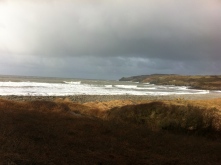A central theme in my work is the focus on place; on the landscape, the environment, the economy and culture and from this – the connections between people, locally available materials and function (for example, tools / buildings / fuel etc.). All human activity has an impact, and yet over the centuries, it seems as if there were occasionally systems that established some kind of balance between the natural world and our actions. Take the countryside of the British Isles for example, where until the development of more industrial approaches to farming following the second world war, the fields were characterised by species diversity – of plants, invertebrates, birds etc. I’m not suggesting this was a panacea – something usually has to give. Some kind of balance also seems to have been established in the management of woodlands for coppicing, creating fuel for firewood and early industrial activity. The coppiced woods created opportunities for a wide range of flowering plants such as bluebells and wood anemones and particular butterfly and bird species – whilst also creating a carbon neutral source of fuel.
Whilst it may seem almost impossible to re-create these systems to serve a world with a growing population of 7 billion people, it does inspire me – and the whole concept of sustainability deeply underlies my work. How could these more balanced systems inform our future actions and innovation? It also means that as I explore landscapes, with ceramic materials in mind, I know that I need to think carefully about the relationships that I will have with both people and place, if I am to stay true to my own values and commitments.

































